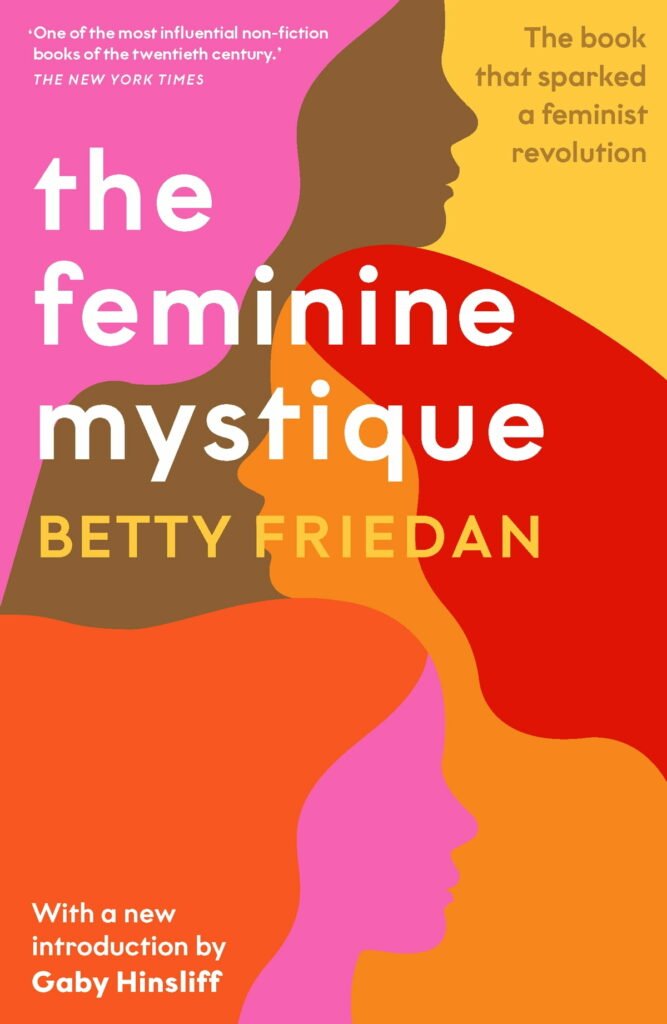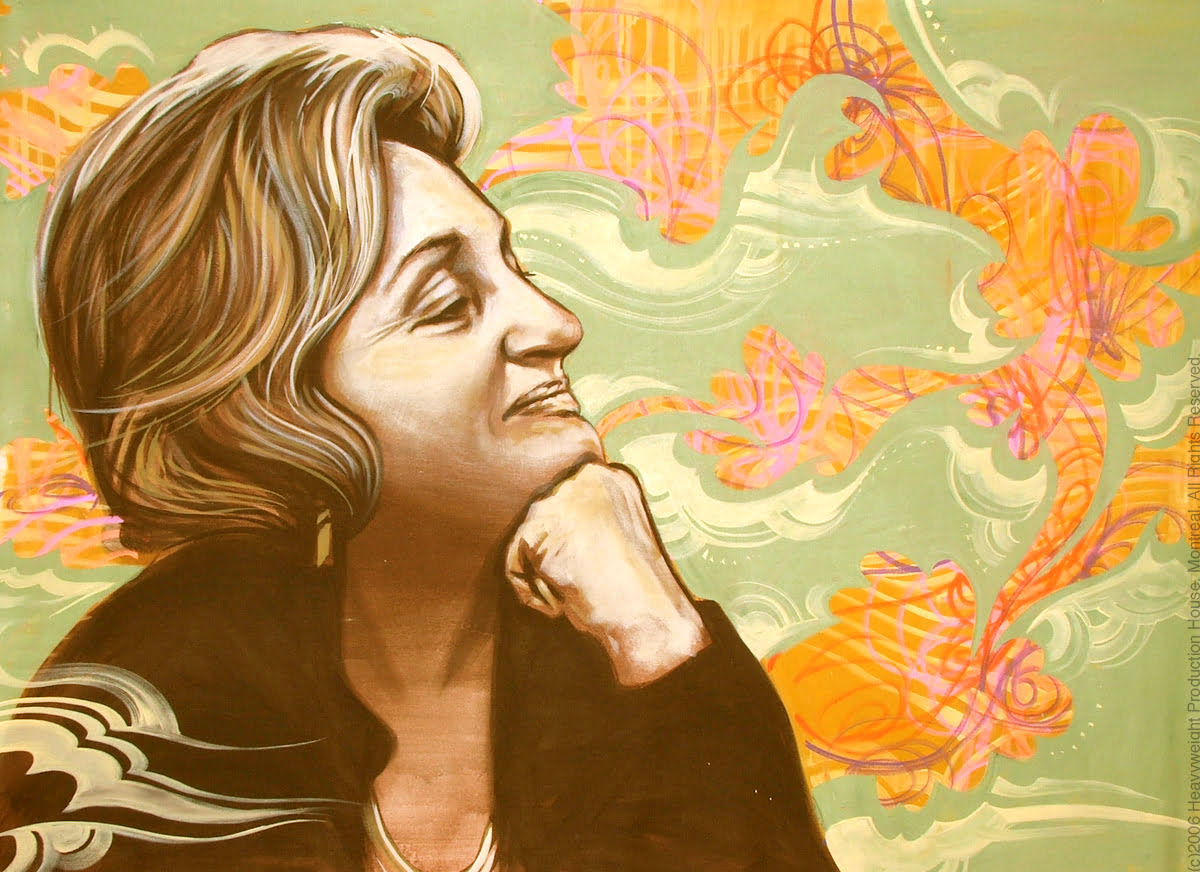A pioneer of the feminist movement, a crusader for equal rights and an acclaimed author, Betty Friedan is best known for her work The Feminine Mystique. Born in 1921 In Illinois, Betty completed her education at Berkley and later founded the National Organization for women in the year 1966. During her career as an activist she wrote several books that included-The Second Stage, It Changed My Life: Writings on the Women’s Movement, Beyond Gender and The Fountain of Age. She later penned her autobiography titled Life so far.
Betty and the second wave of feminism
It is interesting to note that Betty Friedan is credited to be the face of the second wave of the feminist movement. The movement majorly focused on critiquing the patriarchal institutions and cultural practices that governed society.
The Feminine Mystique was published in 1963 and shed light on the deep discontentment women experienced, owing to their duties, obligations and their overall lifestyle in American society. The book spans over 14 comprehensive chapters that identify, locate and give thought-provoking explanations for the experiences of women. Through her words, Friedan attempts to galvanise its readers to join the feminist movement.
Second-wave feminism also drew attention to problems like- domestic violence, marital rape, engendered rape crisis centres and women’s shelters, and also helped introduce changes in custody laws and divorce laws. The movement came to be seen as an abrupt break from the tranquil suburban life that American popular culture portrayed. Yet, the roots of this new rebellion stemmed from the frustrations of college-educated mothers whose disappointment impelled their daughters to bring substantial change in their lives. Second Wave Feminism diverted attention to the cause of women’s oppression, the nature of gender as a whole, and the role that family played in determining their image as women.
The Feminine Mystique
The phrase “feminine mystique” was a term coined by Friedan to highlight and question the inherent assumption that women are fulfilled by their housework, marriage, sexual lives, and children. It was believed that truly feminine women would not want to earn a living for themselves, work, get an education, or have political opinions. Through her book, Friedan wanted to prove that women were unsatisfied but were not given room to express their dissatisfaction.
‘The problem that has no name’, the first chapter from Friedan’s work, points out that ‘normatively feminine’ women were housemakers, child rearers and wives and these women live the hollow American dream, playing the role of consumers in a capitalist America. She believed that women suffered from ‘housewife fatigue’ in the 1960s, when they had children, took anti-depressants and slept for 10 hours a day to numb this hidden oppression.
The Feminine Mystique was published in 1963 and shed light on the deep discontentment women experienced, owing to their duties, obligations and their overall lifestyle in American society. The book spans over 14 comprehensive chapters that identify, locate and give thought-provoking explanations for the experiences of women. Through her words, Friedan attempts to galvanise its readers to join the feminist movement.

‘The problem that has no name’, the first chapter from Friedan’s work, points out that ‘normatively feminine’ women were housemakers, child rearers and wives and these women live the hollow American dream, playing the role of consumers in a capitalist America. She believed that women suffered from ‘housewife fatigue’ in the 1960s, when they had children, took anti-depressants and slept for 10 hours a day to numb this hidden oppression.
In The Feminine Mystique, Friedan says that ‘the highest value and the only commitment for women is the fulfilment of her femininity.’ It describes femininity as ‘mysterious’ ‘intuitive’ and perhaps ‘superior’ to the nature of males. According to Friedan, the sole reason for the unhappy state of women is due to their denial of wanting the same things as men. The book questions the idea that women can only achieve their desires ‘in sexual passivity, male domination, and nurturing maternal love.’ Chapter three of the book deals with the crisis of women’s identity. The education that women received was reduced to a marital degree by popular culture at that point of time. The “mistaken choice,” as Friedan calls it, satisfied men’s desire for a constant nurturing presence and solved the problem of women’s fear of the outside world. In their avoidance of becoming like their mothers, these women repeated the same steps.
Further, In Chapter 10 of her book Friedan interviewed several full-time housewives, finding that although they were not particularly fulfilled by their housework, it kept them all extremely busy. She postulated that housewives unconsciously increased their home duties to pass time because the feminine mystiques taught women that this was their primary role, and if they ever complete their tasks, their purpose would be fulfilled. Throughout, Friedan gives its readers a thorough insight into why women felt the way they did and motivate them to question their social realities as women in a male-dominated world.
Friedan on Freud
One of the most noteworthy parts of the book was Freidan’s commentary on Sigmund Freud’s theory of penis envy. Acclaimed psychologist, Freud developed the ‘theory of penis envy’ which was that women from childhood observed their lack of a penis and they for a long time wanted to obtain something like a penis. Freud further went on to say that a female’s desire for a penis could lead her to pursue “an intellectual career,” which was an attempt to fulfil the repressed wish.

According to Friedan, Freud’s rhetoric infused physiology with literature to create mysticism around women and their choices. She claims that Freudians use pseudo-science to emphasise the notion that women could not attain happiness through male avenues of achievement. Her book says that ‘normal femininity’ is achieved when a woman renounce all her own active goals to identify herself through the goals and activities of her husband or her son.
Towards the end of the book, Friedan gives hard advice to its readers claiming that each woman should recognize herself as an individual and not “as a mother with time on her hands.“ A staunch believer of feminism, Friedan argues that women should find meaning in their work and deters them to pursue careers that society wants them to.
Critics of the book point out that Friedan concentrates on the plight of the white middle- and upper-class housewife, almost entirely ignoring lower-class women and women of colour. Nonetheless, Friedan with her radical ideas and steadfast beliefs, remains relevant in the 21st century and women all over the world can learn a great deal by reading her works, even today.
About the author(s)
Anshula Agarwal is a third-year student of Political Science currently based in Gurgaon and has an immense love for language, literature and movies. She comes across as witty, cheerful and a dedicated individual who is eager to learn things. Some of the things that interest her include basketball, cheesy romance novels, and good conversations.




